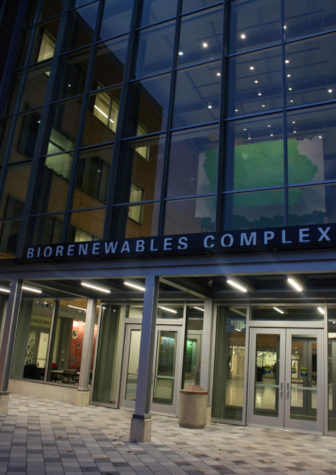ISU alumnus finds success in sustainable landscape architecture
April 6, 2012
An ISU alumnus has turned sustainable landscapes into an art form.
Ken Smith Landscape Architect is an award-winning design firm with experience in a wide variety and scale of projects, using sustainability as a major focus. Ken Smith grew up in Iowa and attended Iowa State University, graduating with a bachelor’s degree in landscape architecture in 1976. At Iowa State’s very own Parks Library, Smith discovered the artwork of Robert Smithson, known for his earthwork, the Spiral Jetty, made in 1970. Smith grew to admire the artist, and became inspired in his later architecture works. After working for the Iowa Conservation Commission in Parks and Recreation Planning, he attended Harvard Graduate School of Design. Smith received a master’s degree in landscape architecture in 1986.
In 1992, Smith opened his own office in New York City. Throughout the years, Smith has created many sustainable landscaped works of art. One example is the Sante Fe Railyard Park, which focuses primarily on water conservation. Throughout the park, water is captured from roof areas to be stored and used as a visible element in the landscape. A water tank was built to store the harvested water, supporting plants, grasses and garden environments. There is also a children’s play area teaching about water and agricultural history with a button-activated, low-use fountain that drains into nearby plantings.
In 2002, the Ken Smith Landscape Architect team began The Orange County Great Park. The vision for the park emphasizes that it should be an intricate part of the local vernacular, celebrate unique South California ecosystems, and be a valuable commodity for the public. This vision manifests itself through the use of native plant communities, the refurbishment of existing buildings, the reuse of existing materials and the sourcing of local suppliers and craftsmen.
The park has an area growing ground for trees in boxes, instead of a far off nursery, adding visual appeal, providing shade and helping reduce the heat effect. Such strategies provide early park amenities and allow for flexibility of future improvements, while engaging the public. The Great Park also offers courses in ecology, gardening, hosts farmer’s markets, and weekly health seminars with the creation of the Farm and Food lab and community garden. It was established that sustainability should be measurable and visible in the park through not only sustainable practices, but also sustainable features.
Smith may be most famous for his work on the rooftop garden on the Museum of Modern Art in New York City. Smith’s goal was to create a sustainable garden, with his inspiration coming from a pair of skateboarder’s camouflage pants. He used seven tons of crushed recycled glass, four tons of recycled rubber mulch and 185 crushed recycled rocks to form his artificial landscape masterpiece. It is only visible to people who live above the Museum of Modern Art; there are no visitors allowed.









